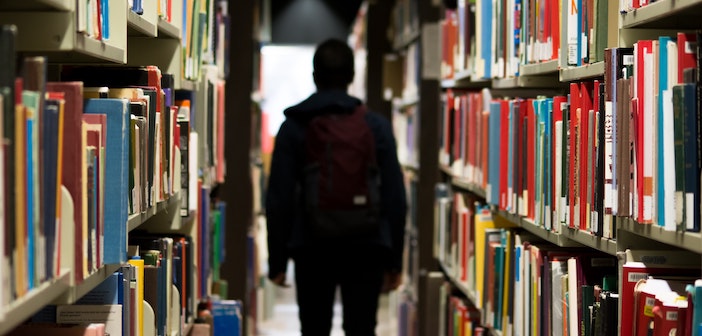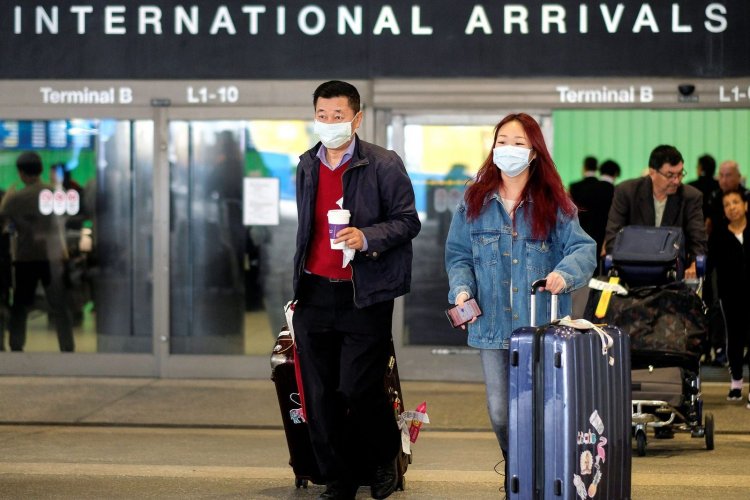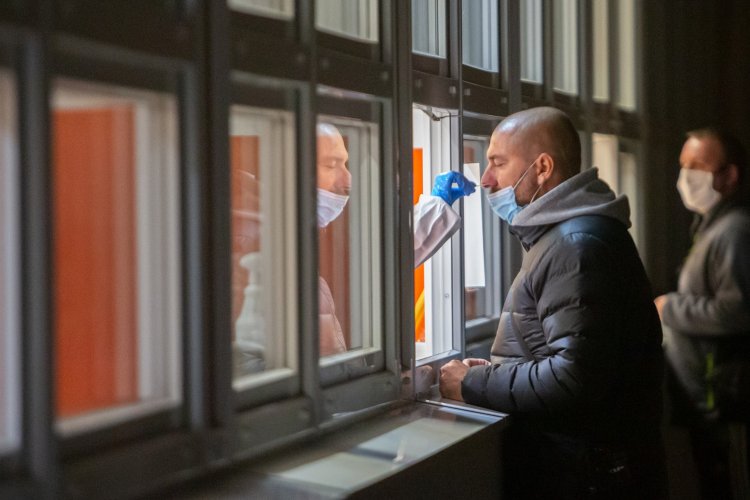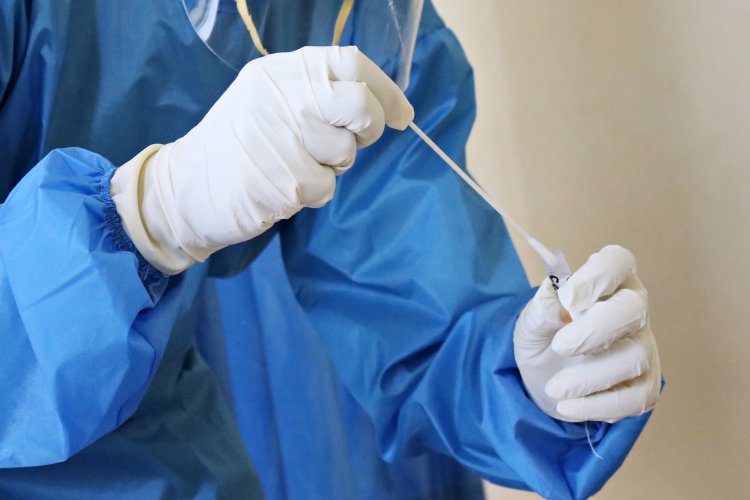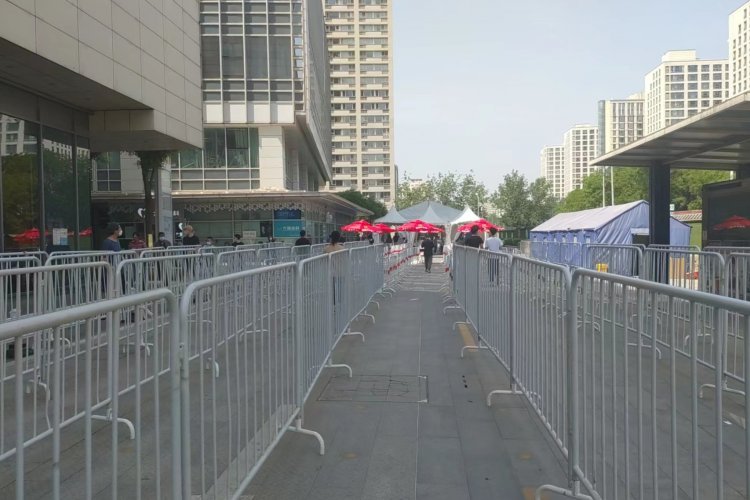Stringent Standards Issued as K-12 Schools Prepare for (Eventual) Reopening
Masks while teaching. No large-scale events. No outsiders on campus. Temporary isolation areas for possible virus sufferers. These are just some of the 25 requirements the State Council has set forth for Beijing (and the nation at large) for creating a safe environment for all when it’s time to resume school.
First things first – no date has been announced yet for the new semester (although that doesn't stop us from speculating, feel free to cast your vote over here).
With that out of the way, below are the 25 requirements for K-12 schools that were announced Tuesday by the State Council’s Joint Prevention and Control Mechanism Against COVID-19.
Also, if you are searching for the original Chinese, you’ll find the document from the State Council’s website here (a different document was also circulated for preschools here).
Before School Opens
- Ensure the health of students, teachers, and staff by conducting and submitting daily heath reports to supervising authorities.
- Provide all staff training on prevention and control systems, personal protection, disinfection, and the like.
- Thoroughly disinfect the entire campus, as well as ventilate all classrooms.
- Assure all returning teachers, staff and students have conducted a 14-day self-quarantine in the local area before returning to campus.
- Assure an adequate supply of hand soap, hand sanitizer, masks, gloves, and other prevention and control materials.
- Set up a temporary isolation area for any person who shows signs of fever or other symptoms related to Covid-19.
- Formulate clear emergency plans for epidemic prevention and control, including training and drills, with the school principal holding top-line responsibility.
After School Opens
- Keep abreast of the health of staff and students on a daily basis, inspect students and staff in the morning and the afternoon, implement a daily reporting system, and report results to the supervising department.
- Properly store and mark disinfectant to avoid accidental ingestion or burns. When disinfection is carried out, the operator shall take effective protective measures.
- Every area on campus (such as classrooms, dorms, libraries, laboratories, sporting facilities, cafeterias, teachers’ offices, and washrooms) should be ventilated with fresh air at least three times a day for no less than 30 minutes each time. Ventilate with open windows or mechanical ventilation as much as possible during class breaks. If air conditioning is used, ensure safe air supply, sufficient fresh air input, and that all exhaust is vented directly to the outdoors.
- Strengthen surface cleaning and the disinfection of common objects. Classrooms, dormitories, libraries, cafeterias; and other places should be kept clean, tidy, with a disinfection routine recorded every day, with particular attention paid to high-frequency contact surfaces such as door handles, faucets, stair handrails, and fitness equipment.
- Strengthen the cleaning and disinfection of dining equipment. Tableware should be disinfected after every use. Students should be encouraged to bring their own tableware. Tableware should be sterilized using heat or a chlorine solution after each use.
- Bathroom fixtures should be regularly disinfected with a chlorine solution and rinsed thoroughly afterward.
- Ensure that hand-washing facilities are functioning properly and are equipped with soap or hand sanitizer, in hands-free dispensers when possible. There should be a least one washbasin or 0.6m long sink for every 40-45 persons.
- Strengthen the sorting and disposal of garbage, ensuring prompt disposal and regularly disinfecting containers.
- Teachers are advised to wear masks when teaching.
- Implement strict hand hygiene measures for teaching staff and students. Hands should be thoroughly washed with soap and running water or hand sanitizer before meals; before and after trips to the toilet; after contact with garbage; after going outdoor; after using sports equipment; after using school computers or other public equipment; after contact with animals; or after touching any possibly contaminated goods.
- Strengthen the monitoring of absences due to illness. Keep records of absenteeism, early retirement and leave requests. Follow up with staff and students who are absent due to illness.
- Large group activities should not be held.
- Promote personal hygiene and protection among staff, students and parents. Demonstrate the correct way to wash hands and cultivate good health habits such as using tissues when coughing or sneezing.
Emergency Treatment of Suspected Virus Sufferers
- If a staff member develops a fever, has a dry cough, fatigue, stuffy nose, runny nose, sore throat, diarrhea or other symptoms, they should immediately alert their superior and promptly report to a designated hospital. Public transportation should be avoided and a proper medical-grade or higher mask should be worn en route.
- If a student develops a fever, has a dry cough, fatigue, stuffy nose, runny nose, sore throat, diarrhea or other symptoms, they should promptly alert the school and take appropriate measures.
- Any suspected case of Covid-19 among staff or students should be reported immediately to the District Disease Prevention and Control Department, and cooperate with the relevant departments to manage all close contacts of the suspected case.
- All of those who are living and studying with the affected person should be informed of risks and should seek medical advice promptly if symptoms such as fever or dry cough arise.
- Designate a staff member to be responsible for monitoring the health of staff or students while under quarantine.
READ: Heading Back to the Office? Not Without Taking These Measures
This article first appeared on our sister site beijingkids.
Photo: Unsplash
Related stories :
Comments
New comments are displayed first.Comments
![]() LaoSichuan
Submitted by Guest on Sun, 03/01/2020 - 12:19 Permalink
LaoSichuan
Submitted by Guest on Sun, 03/01/2020 - 12:19 Permalink
Re: Stringent Standards Issued as K-12 Schools Prepare for ...
What are K-12 schools?
If Lao Sichuan have time to post questions, Lao Sichuan have time to google answer for himself.
But, this one time only, I'll show pity. K-9 is the term for dogs used by the police and military. In recent years, through genetic engineering, Chinese scientists working in strictest secrecy have developed a breed of dog 33% smarter than the average dog. Since 3 is 33% of 9, the new super-dogs are called K-12's. K-12 schools are government installations training said dogs. Remember, you read it here first!
Its the responsibility of an author (and the editor) to explain unusual abbreviations, not the responsibility of the reader to baidu the answer. Not all readers work in education and many readers are not from English-speaking countries
![]() LaoSichuan
Submitted by Guest on Sat, 02/29/2020 - 17:08 Permalink
LaoSichuan
Submitted by Guest on Sat, 02/29/2020 - 17:08 Permalink
Re: Stringent Standards Issued as K-12 Schools Prepare for ...
What are K-12 schools?
Validate your mobile phone number to post comments.

